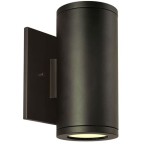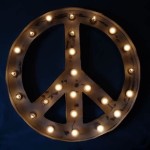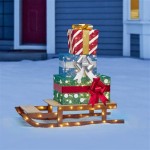Easiest Ways to Recover Outdoor Cushions
Outdoor cushions endure significant wear and tear from sun exposure, rain, and general use. Recovering these cushions offers a cost-effective solution to revitalize outdoor furniture and extend its lifespan. This process can be surprisingly straightforward, even for those with limited sewing experience.
Gathering Necessary Materials
Before beginning the recovery process, gathering the appropriate materials ensures a smooth and efficient workflow. These materials typically include:
- Outdoor Fabric: Choose a durable, weather-resistant fabric specifically designed for outdoor use.
- Sewing Machine (Optional): While a sewing machine simplifies the process, hand-sewing is a viable alternative.
- Scissors: Sharp fabric scissors are crucial for clean, precise cuts.
- Measuring Tape: Accurate measurements are essential for properly sized cushion covers.
- Pins: Straight pins secure fabric layers for sewing.
- Zipper (Optional): A zipper allows for easy removal of the cover for cleaning.
- Seam Ripper (Optional): Useful for correcting mistakes or removing existing covers.
Measuring the Cushions
Accurate measurements form the foundation of well-fitting cushion covers. Measure the length, width, and depth of each cushion. Add extra inches to these measurements to account for seam allowances and the thickness of the cushion.
Choosing the Right Fabric
Fabric selection significantly impacts the durability and aesthetics of the recovered cushions. Consider these factors when choosing outdoor fabric:
- UV Resistance: Protects the fabric from fading and deterioration caused by sunlight.
- Water Resistance: Repels water and prevents mildew growth.
- Durability: Withstands regular use and resists tearing or abrasion.
- Colorfastness: Retains color vibrancy despite exposure to the elements.
Creating a Pattern
Creating a pattern ensures accurate cutting and simplifies the sewing process. Use the cushion measurements to draw a pattern on paper, remembering to include seam allowances. Alternatively, using the old cushion cover as a template can streamline this step. Simply remove the old cover carefully and use it as a guide for cutting the new fabric.
Cutting the Fabric
Lay the fabric flat and place the pattern pieces on top. Pin the pattern to the fabric to prevent shifting. Using sharp scissors, carefully cut along the pattern lines, ensuring clean, precise cuts.
Sewing the Cushion Cover
With the fabric cut, the sewing process can begin. If using a sewing machine, select a suitable needle and thread for outdoor fabrics. Pin the fabric pieces together, right sides facing, and sew along the marked lines, leaving one side open for inserting the cushion. If adding a zipper, insert it before sewing the final seam.
Hand-Sewing Techniques
For hand-sewing, a backstitch or whip stitch provides a strong, durable seam. Take care to maintain even stitches and consistent tension throughout the sewing process. While more time-consuming than machine sewing, hand-sewing offers portability and accessibility.
Inserting the Cushion
Once the cover is nearly complete, turn it right side out. Carefully insert the cushion into the cover, ensuring it fits snugly. If the cover includes a zipper, close it to secure the cushion inside. If the opening was left for hand-sewing, carefully stitch the opening closed.
Caring for Recovered Cushions
Proper care extends the life of recovered cushions. Regularly brush off dirt and debris. Clean spills promptly with a mild soap and water solution. For more thorough cleaning, consult the fabric manufacturer's instructions. Storing cushions indoors during inclement weather or the off-season further protects them from damage.
Alternative Methods: Using Fabric Glue or Iron-On Hem Tape
For those seeking no-sew options, fabric glue or iron-on hem tape can be used to create cushion covers. While these methods may not be as durable as traditional sewing, they offer a quick and easy solution for recovering cushions. Ensure the adhesive is suitable for outdoor use and follow the manufacturer’s instructions carefully.
Adding Decorative Elements
Once the cushions are recovered, consider adding decorative elements to enhance their appearance. Piping, buttons, or ties can add a touch of personality and style. These additions can be sewn on by hand or machine, depending on the complexity of the design.

How To Re Cover Outdoor Cushions A Quick Easy Diy Oh Yay Studio Color Painting Making Everyday Celebrating

How To Recover Your Outdoor Cushions Quick Easy Jennifer Maker

The No Sew Way To Reupholster Outdoor Cushions Blue I Style

No Sew Project How To Recover Your Outdoor Cushions Using Fabric And A Glue Gun The V Spot

How To Re Cover Outdoor Cushions A Quick Easy Diy Oh Yay Studio Color Painting Making Everyday Celebrating

How To Recover Your Outdoor Cushions Quick Easy Jennifer Maker

Easy Way To Make Outdoor Cushion Covers

3 Ways To Recover Patio Cushions Wikihow

Sew Easy Outdoor Cushion Covers Confessions Of A Serial Do It Yourselfer

Diy Outdoor Cushions A Erfly House
Related Posts







